
Dexter Jackson's 7 Keys to Building Quality Muscle
Dexter Jackson has two of the highest-caliber guns ever flexed on a stage, but if you're looking for the key to bulbous biceps here, the secret is, there is no secret. He does the same things most every other bodybuilder does for moderate volume and moderate reps. A typical routine consists of EZ-bar preacher curls, seated alternate dumbbell curls, and one-arm machine curls, all for four sets of eight to 10 reps. “There are a lot of different ways to do a curl with free weights and machines,” he says.
His workouts might include a few forced reps and perhaps some supersets, but mostly he performs straight sets. The one constant is quality reps. He doesn't cheat, and he knows exactly how to maximize the tension on the targeted muscles from stretch to contraction, rep after rep.
Keep reading for six more tips from the former Mr. Olympia, plus five moves that are staples in his workout regimen.
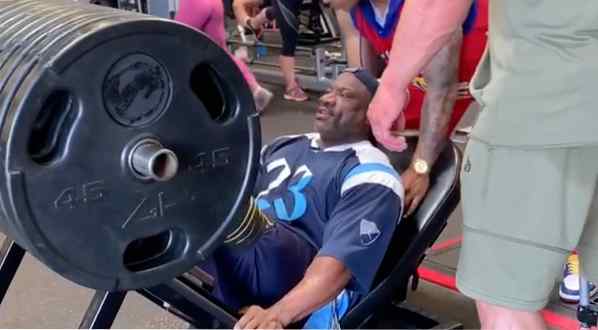
Dexter Jackson Doesn't Mess Around on Leg Da…
The veteran bodybuilder is going all out ahead of the 2019 Olympia.
Read article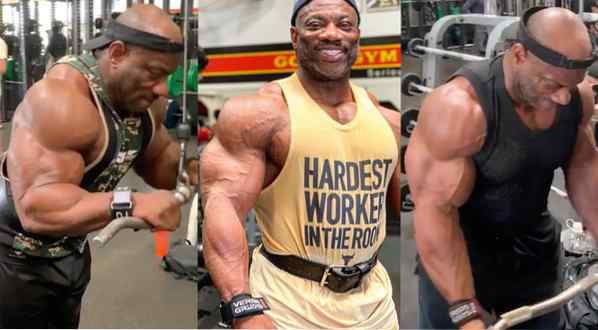
Dexter Jackson's Instagram Proves Father Tim…
"The Blade" never dulls.
Read article1 of 7
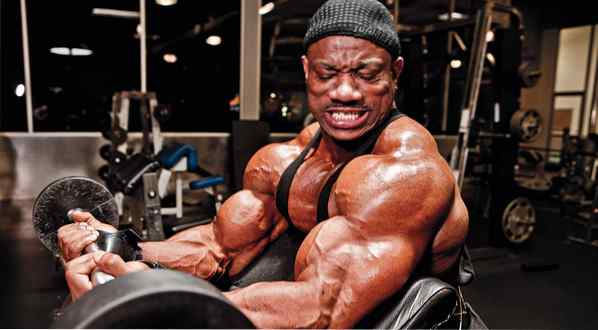
Kevin Horton / M+F Magazine
Find a Trainer
When it seemed that his physique might actually be fading, Jackson enlisted trainer Charles Glass, a master of hitting all the angles with modified exercises. He's been Jackson's trainer ever since, proving you can teach an old dog new tricks.
His shoulder routine seems elementary (overhead presses, lateral raises), but what makes it unique is Glass, who can come up with things like a one arm Smith machine overhead press and an underhand EZ-bar front raise
2 of 7
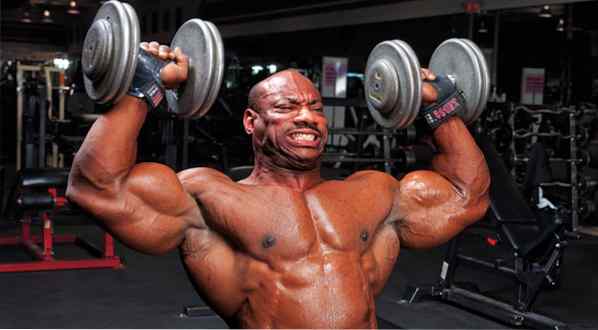
Pavel Ythjall / M+F Magazine
Know When to Cut Back
This is the part he doesn't like-all those monotonous meals. “When I retire, I'll eat like a normal person and weigh less than 200 pounds.” For now, though, eating is a big part of his job. He makes the most of it by spicing up his off-season meals with things like mashed potatoes, turkey bacon, buttered lobster, and steak smothered in sauce. However, when the Blade brings out the cuts during his contest prep, he turns to the diet staples-tilapia, chicken breasts, and sauce-free steak.
3 of 7
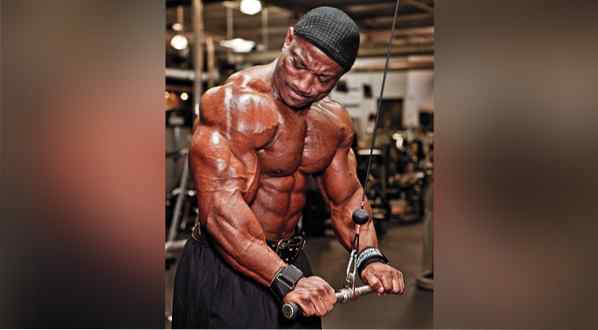
Pavel Ythjall / M+F Magazine
Adapt With Father Time
The Blade's remarkable longevity has been possible mainly because he's avoided trauma. “I don't do all those crazy, heavy, compound movements that I did when I was younger,” he says. “As I got older, I changed my training. Guys like Ronnie [Coleman] and Dorian [Yates] kind of fell apart at the end because they didn't change their training. I do more isolation and machine exercises now. It works for me, as long as I train hard with good form.”
4 of 7
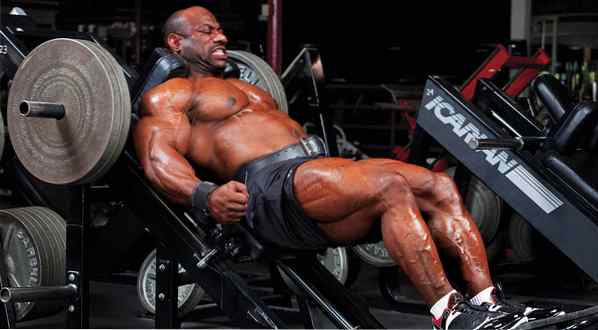
Pavel Ythjall / M+F Magazine
Give Machines a Chance
With middle-age knees and hips, it becomes increasingly difficult to lift ultraheavy. Instead, the Blade focuses on one-leg presses, superslow hack squats, and supersetting Smith machine front squats and leg extensions.
The same principle applies to chest. He built it with the barbell and dumbbell standards, including plenty of bench pressing. Today, a typical routine consists of Smith machine incline presses, seated machine presses, incline flyes, and pec deck flyes.
5 of 7
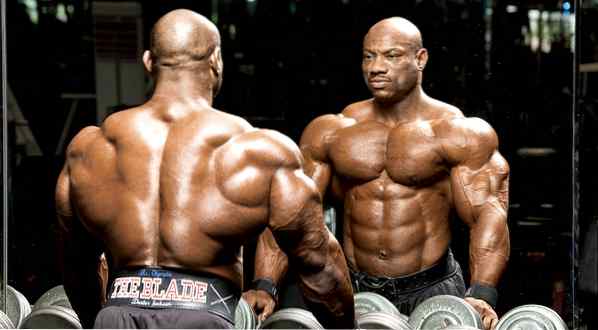
Kevin Horton
Feel It
“The key to arm training is the same key to training anything. You need to feel your muscles working throughout every rep,” Jackson once told us. “Forget about the weight. Focus on your muscles, and focus on those areas of your muscles-like the peaks of your biceps or the outer heads of your triceps- that you want to hit with a particular exercise.”
6 of 7
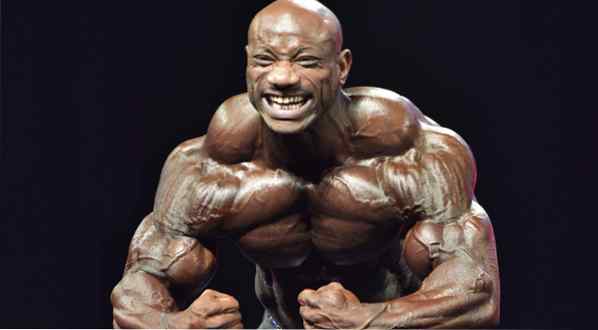
Per Bernal / M+F Magazine
When in Doubt, Flex
“One of those things that really bring out the extra qualities in your muscles is posing,” Jackson said. “I can get a great pump from just posing my arms. The thing is, you don't have to be a competitor to benefit from this. Anyone can benefit from flexing their arms, whether between sets or later at home. It's going to strengthen that mind-to-muscle connection that's so important to getting effective workouts. If I have a secret, this is it. Flex your arms.”
7 of 7
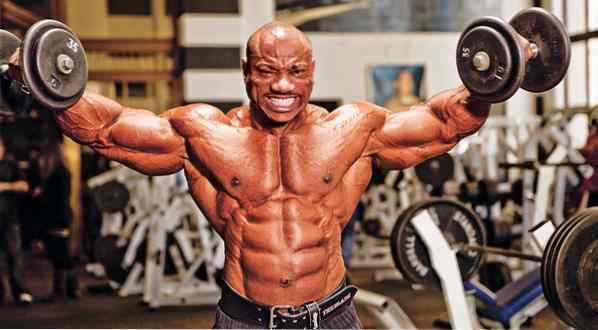
Pavel Ythjall / M+F Magazine
Dexter Jackson's Go-to Moves
- EZ-Bar Preacher Curl
- Sit down on a preacher bench holding an EZ-bar. Extend your arms against the pad, but don't lock them out. Curl the weight up slowly. Squeeze your biceps hard once you've reached the top, then slowly lower.
- Overhead Press
- Sit on a bench with back support and hold a dumbbell in each hand at shoulder level. Brace your core and press the weights directly overhead. Be sure to lower them back to your shoulders with control.
- Hack Squat
- Lean back into the hack squat pad, and press your delts into the shoulder pads. Place your feet firmly on the platform and drive through your heels to move yourself up and down.
- Triceps Pushdown
- Attach a straight bar to a cable pulley set high. Grab with a shoulderwidth grip and press the weight down, moving the bar with your triceps. Hold the contraction for a second and move it back to the start position.
- Lateral Raise
- Hold a dumbbell in each hand and stand tall, feet shoulder width apart. Raise your arms up until parallel with the floor. Lower the weight back down slowly.


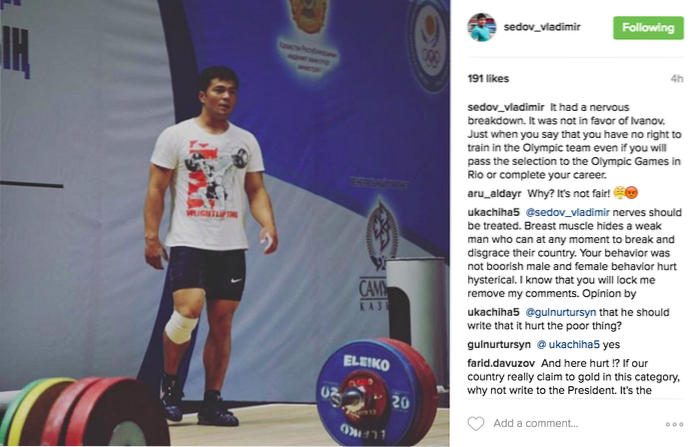
Ingen har kommenterat den här artikeln än.